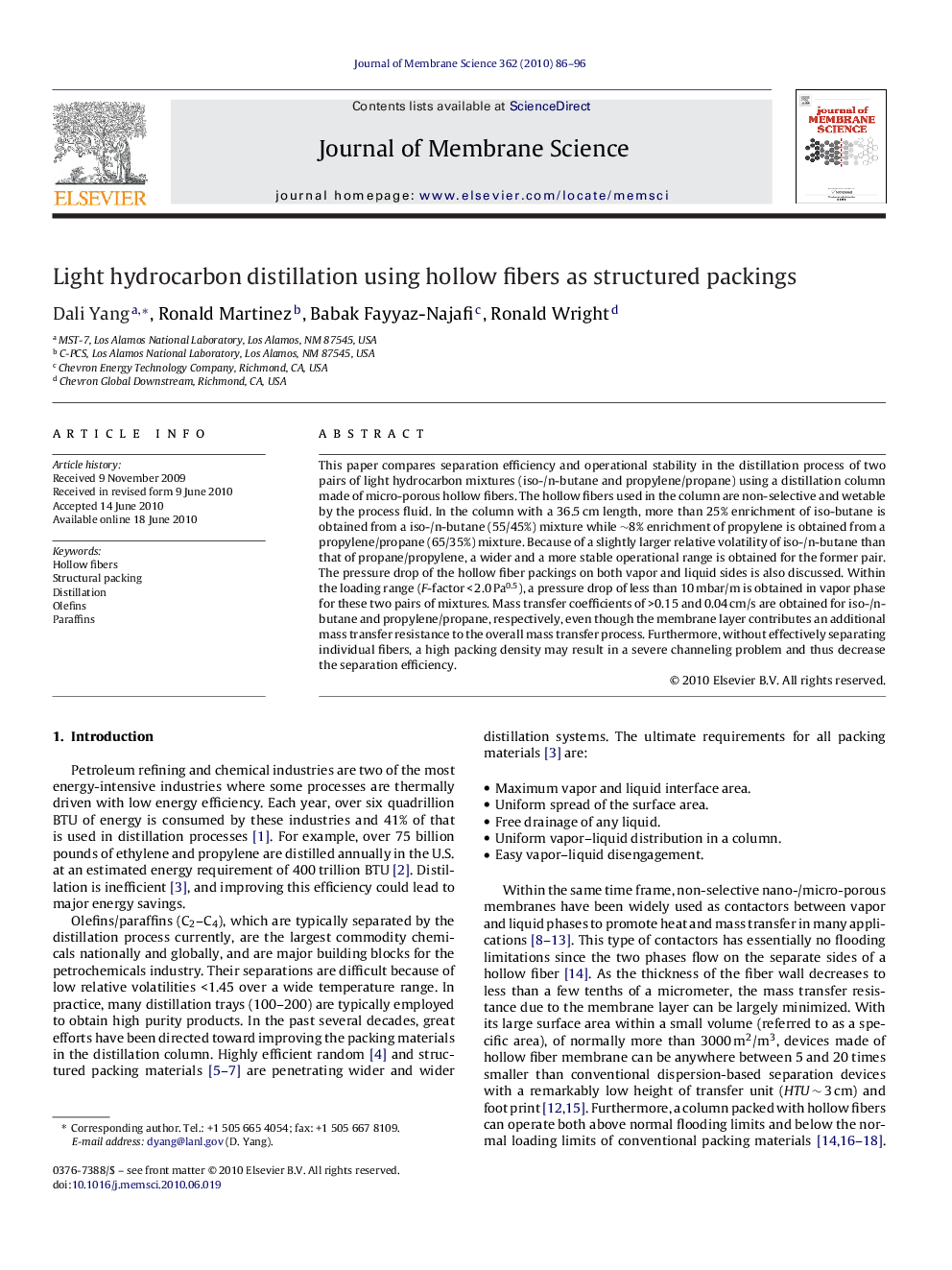| Article ID | Journal | Published Year | Pages | File Type |
|---|---|---|---|---|
| 636228 | Journal of Membrane Science | 2010 | 11 Pages |
This paper compares separation efficiency and operational stability in the distillation process of two pairs of light hydrocarbon mixtures (iso-/n-butane and propylene/propane) using a distillation column made of micro-porous hollow fibers. The hollow fibers used in the column are non-selective and wetable by the process fluid. In the column with a 36.5 cm length, more than 25% enrichment of iso-butane is obtained from a iso-/n-butane (55/45%) mixture while ∼8% enrichment of propylene is obtained from a propylene/propane (65/35%) mixture. Because of a slightly larger relative volatility of iso-/n-butane than that of propane/propylene, a wider and a more stable operational range is obtained for the former pair. The pressure drop of the hollow fiber packings on both vapor and liquid sides is also discussed. Within the loading range (F-factor < 2.0 Pa0.5), a pressure drop of less than 10 mbar/m is obtained in vapor phase for these two pairs of mixtures. Mass transfer coefficients of >0.15 and 0.04 cm/s are obtained for iso-/n-butane and propylene/propane, respectively, even though the membrane layer contributes an additional mass transfer resistance to the overall mass transfer process. Furthermore, without effectively separating individual fibers, a high packing density may result in a severe channeling problem and thus decrease the separation efficiency.
Research highlights▶ High specific area hollow fiber membranes can be potentially used as high capacity structured packings in hydrocarbon distillation. ▶ Hollow fiber packings can largely increase the separation efficiency and reduce energy consumption in light hydrocarbon distillation. ▶ Pressure drop on the vapor side seems not be a technical barrier for the hollow fiber packings used in distillation applications.
